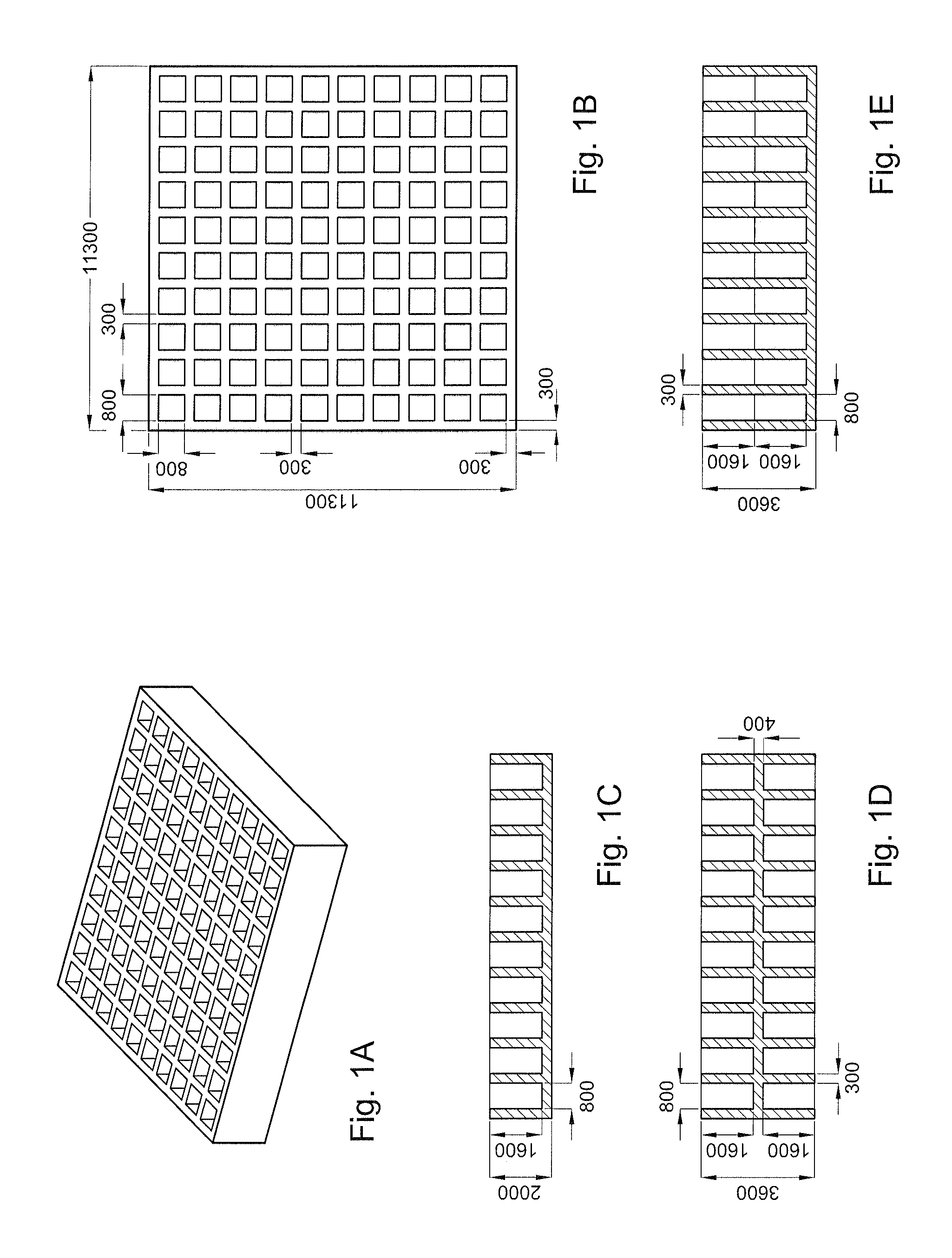High throughput multiwell system for culturing 3D tissue constructs in-vitro or in-vivo, method for producing said multiwell system and methods for preparing 3D tissue constructs from cells using said multiwell system
a multi-well system and cell technology, applied in the field of cell culture, can solve the problems of lack of predictability of such 2d assays, limited value of 2d cellular assays, and inability to cult 3d tissue constructs in vitro or in vivo, and achieve the effect of avoiding the formation of a single cell culture cell, reducing the number of cells
- Summary
- Abstract
- Description
- Claims
- Application Information
AI Technical Summary
Problems solved by technology
Method used
Image
Examples
embodiments
[0042]The invention is based on the surprising finding that cells, which in vivo are capable of forming 3D tissues, but when cultured in vitro in a petri dish or a regular culture flask only produce 2D layers, form 3D tissue constructs when cultured in wells having a volume between 0.125 and 4.0 mm3. Normally, cells do not form 3D tissue constructs in multiwell systems, no matter how long they are cultured (see also FIG. 4), unless such multiwell systems are prepared by incorporating 3D synthetic polymer scaffolds. Surprisingly, the inventors have demonstrated that very small well volumes induce the formation of 3D tissue constructs. The multiwell systems provided herein therefore preferably do not comprise 3D synthetic polymer scaffolds.
[0043]Multiwell System
[0044]The invention provides a multiwell system comprising wells having a volume between 0.125 and 4.0 mm3. An advantage of the microwell system according to the invention is that the volume of reagents required for culturing i...
examples
Materials and Methods
Well Macroarray Fabrication
[0076]A Bioplotter device (Envisiontec GmbH, Germany), which is a XYZ plotter, was used to make the well macroarrays. 3D cubical models were CAD-designed with Rhinoceros software (Delft, The Netherlands) and loaded on the Bioplotter CAM software (PrimCAM, Einsiedeln, Switzerland). In addition, materials were loaded in a steel syringe for thermoplastic polymers or plastic syringe for hydrogels. Then, the syringe-cartridge unit was mounted on the mobile X-arm of the apparatus. A nitrogen variable pressure between 0.4 Bar and 4 Bar was applied to the syringe for material extrusion. Pressure varied depending on the biocompatible material deposited. The combination of software and physical set-up resulted in the extrusion of materials in the form of fibers deposited layer-by-layer onto a stage. The starting fiber deposition speed varied from 320 mm / min and 1800 mm / min depending on the biocompatible material composition.
[0077]To obtain macro...
PUM
| Property | Measurement | Unit |
|---|---|---|
| thickness | aaaaa | aaaaa |
| volume | aaaaa | aaaaa |
| volume | aaaaa | aaaaa |
Abstract
Description
Claims
Application Information
 Login to View More
Login to View More - R&D
- Intellectual Property
- Life Sciences
- Materials
- Tech Scout
- Unparalleled Data Quality
- Higher Quality Content
- 60% Fewer Hallucinations
Browse by: Latest US Patents, China's latest patents, Technical Efficacy Thesaurus, Application Domain, Technology Topic, Popular Technical Reports.
© 2025 PatSnap. All rights reserved.Legal|Privacy policy|Modern Slavery Act Transparency Statement|Sitemap|About US| Contact US: help@patsnap.com



